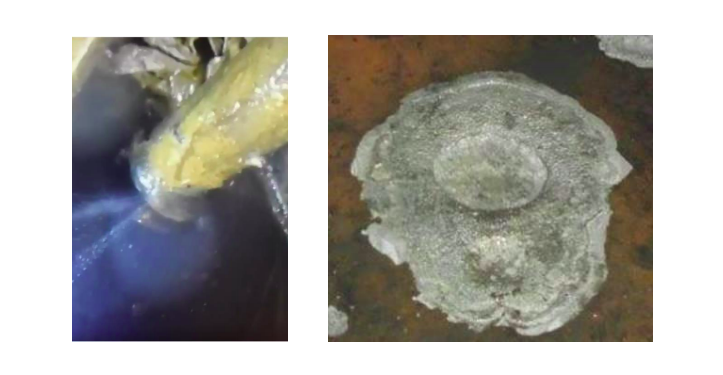The Marine Safety Forum has published a Safety Alert relating to the discovery of a leak in a tank caused by corrosion. The incident highlights issues associated with the disposal of caustic chemicals.
The incident
The Chief Engineer was carrying out daily tank-sounding routines in the engine room when he observed an unexpected rise in liquid level. The frequency of soundings was increased and monitored closely for 24hrs.
The next day, the Chief Engineer informed the Master that the tank volume had increased by approximately 200 litres and requested permission to open the tank for investigation. A risk assessment and permit to work for dangerous space entry was actioned and the tank opened for inspection later that day.
GET THE SAFETY4SEA IN YOUR INBOX!
Upon investigation, the Chief Engineer discovered a pinhole leak in the structure beneath the sounding pipe, allowing salt water to enter the space from outside the tank. The Master informed the Duty Technical Manager, and the vessel was sent to a layby berth for repairs.
Probable causes
Initial investigation by the ship’s engineers concluded that the striking plate at the bottom of the sounding pipe was missing. This allowed the brass weight to repeatedly strike the steelwork, damaging the paint coating and exposing the steelwork to corrosion.
Further investigation concluded the following:
- The tank had been inspected and maintained in accordance with company procedure;
- The brass weight of the sounding tape had damaged the paint coating on the striking plate and steelwork below;
- A corrosive chemical had been incorrectly disposed of and introduced to the tank, accelerating the corrosion process;
- The acid may have become trapped under bubbles of damaged paint, allowing concentrated corrosion over the short time;
- The combination of exposed steelwork and caustic solution destroyed the striking plate and steelwork below.
Actions taken
- Effective repairs were carried out onboard in collaboration with third-party welders and divers;
- All crew was reminded of the importance of correct chemical handling – including safe disposal. Onboard a vessel, there are many different chemicals used; some of these chemicals pose a serious health risk with some being extremely caustic. These chemicals should be used in the appropriate and prescribed way and not misused;
- MSDS (Material Safety Data Sheet) sheets are provided for safety and information and contain all relevant information about the chemical, such as the physical and chemical properties, hazard identification, handling and storage and disposal considerations;
- Caustic or otherwise dangerous chemicals, and their containers, should be disposed of at an authorized hazardous or special waste collection point in accordance with any local regulation.
Vessels must ensure that after using caustic chemicals, the contents/container are disposed of to an authorized hazardous or special waste collection point in accordance with any local regulation. Should you be unsure where or how to dispose of any chemical, please contact the office, or waste disposal provider on the approved supplier list,
…the MSF advised.
SOURCE READ THE FULL ARTICLE
https://safety4sea.com/lessons-learned-tank-corrosion-causes-leak/






